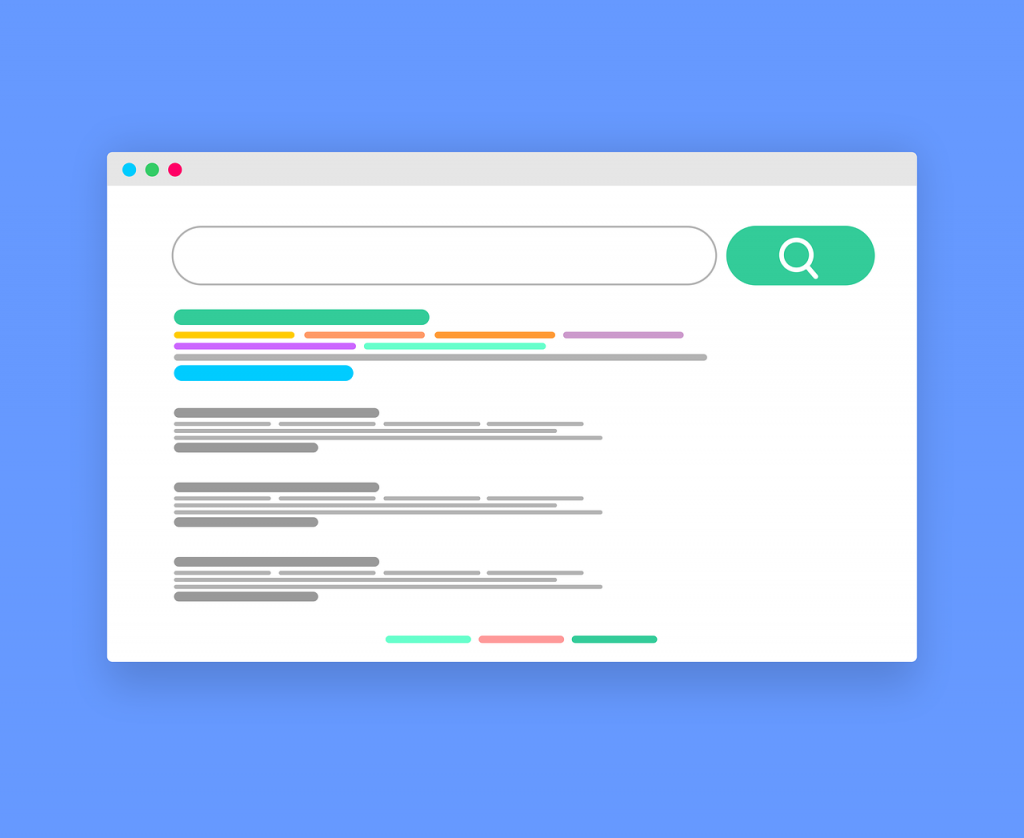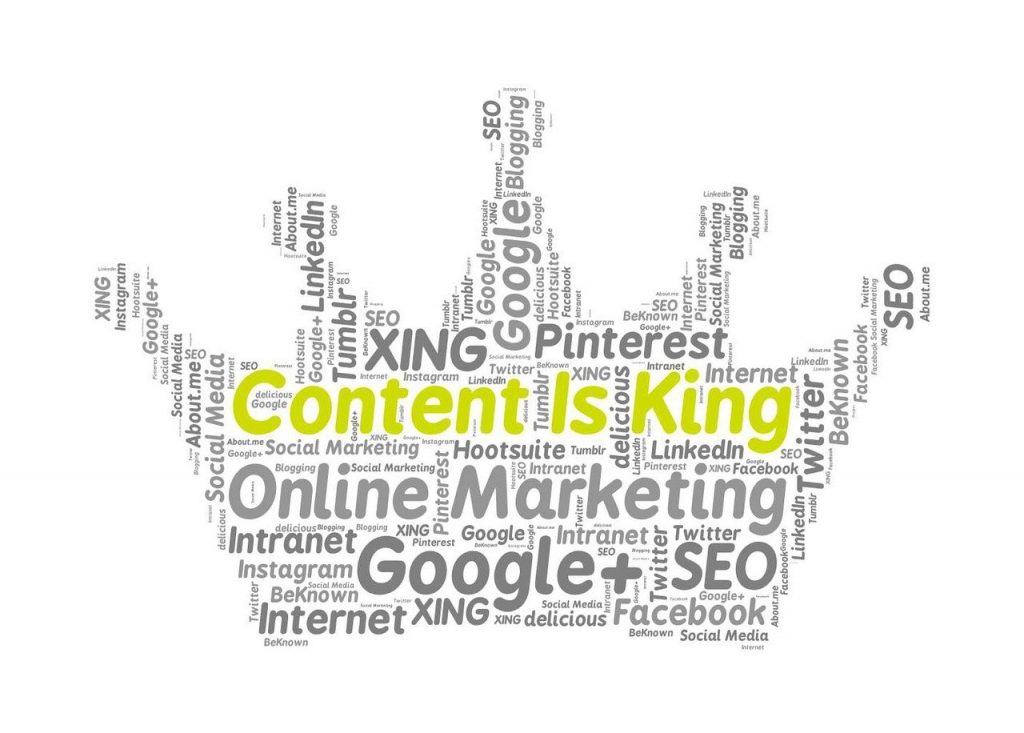Creating content that ranks well on search engines is essential for driving organic traffic, growing brand visibility, and boosting conversions. SEO content creation is not just about writing articles that are keyword-heavy; it’s about creating quality content that answers users’ needs while also being optimized for search engine algorithms.

In this comprehensive guide, we will walk you through the steps to master SEO content creation, including tips and best practices that ensure your content is relevant, engaging, and easy to discover.
What is SEO Content Creation?
SEO content creation involves writing, structuring, and optimizing content in a way that makes it more visible to search engines like Google, Bing, and Yahoo. This process aims to match the intent of the searcher with relevant, high-quality content that answers their questions or fulfills their needs.
It’s essential to note that SEO is not about stuffing your article with keywords. Search engines have evolved and now prioritize content that provides genuine value. This means that simply having the right keywords isn’t enough – you must focus on the user’s experience, intent, and satisfaction. In short, SEO content creation is about building a balance between user-focused and search engine-focused elements.
The Foundations of SEO Content Creation
Content Quality
The foundation of SEO success is high-quality content. To create content that ranks well, you need to address your audience’s pain points, provide solutions, and give insightful information that encourages engagement. Poor-quality content leads to lower rankings and also decreases user satisfaction, leading to high bounce rates.
- Relevance: Your content should directly answer the searcher’s query or provide solutions to their problems.
- Depth: Surface-level content may not provide enough value. Consider offering in-depth guides or comprehensive answers that position your content as a valuable resource.
- Accuracy: Make sure your information is factual, up-to-date, and well-researched. Credibility matters to both search engines and users.
Search Engine Ranking Factors
Search engines use algorithms to evaluate various aspects of your content and website. Understanding these factors is crucial for creating content that ranks well:
- User Experience (UX): This refers to how easy and enjoyable your website is for visitors. Poor UX, like slow loading times or confusing navigation, can drive users away, leading to higher bounce rates, which negatively impact rankings.
- Authority and Trustworthiness: Google uses signals like backlinks from reputable sites, user engagement metrics, and content length to determine the authority of your page.
- Mobile-Friendliness: Google now uses mobile-first indexing, meaning it evaluates your mobile site to determine rankings. Ensure that your website is responsive and optimized for mobile devices.
- Page Speed: If your page loads slowly, users will leave, and Google will take note. Optimizing images, compressing files, and using a reliable web host can help improve page load speeds.
Keyword Research for SEO Content Creation
Keyword research is one of the most important steps in SEO content creation. Without knowing what your audience is searching for, it’s impossible to create content that ranks well.
Tools for Keyword Research
There are many tools available to help you discover what keywords your target audience is using. Some of the most popular include:
- Google Keyword Planner: Great for beginners, it shows keyword volume and competition.
- SEMrush: A more advanced tool that provides in-depth data on keywords, search intent, and competitors.
- Ahrefs: This tool is especially useful for finding backlink opportunities as well as keyword analysis.
Search Intent: Understanding User Goals
Not all searches are the same. For SEO success, you need to understand what kind of content matches different types of searches. Users might search for different reasons, including:
- Informational: The user wants to learn something (e.g., “how to do keyword research”).
- Navigational: The user is looking for a specific website (e.g., “Google Keyword Planner”).
- Transactional: The user is ready to make a purchase or perform an action (e.g., “best SEO tools”).
Incorporating Keywords Naturally
While keywords are important, avoid keyword stuffing, which is the overuse of specific terms in an unnatural way. Instead, aim for a balance:
- Primary Keyword: Your primary keyword should appear in key places like the title, meta description, headers, and within the body of the text.
- Secondary Keywords: Use variations of your primary keyword and related terms to enhance context.
On-Page SEO Best Practices
Optimizing your content for search engines doesn’t stop at inserting keywords. On-page SEO is about making your content technically sound, structured, and optimized to deliver the best user experience. This not only helps search engines understand your content but also improves engagement by making your site easier to use and navigate.
Title Tags and Meta Descriptions
Your title tag is one of the most important on-page SEO elements. It gives both users and search engines a clear understanding of what the content is about.

- Title Tag Best Practices: Your title tag should be concise (60 characters or less), include your primary keyword, and accurately reflect the content of the page. This helps search engines understand your content and boosts click-through rates (CTR) in search engine results pages (SERPs).
- Meta Descriptions: While meta descriptions don’t directly impact rankings, they influence CTRs, which indirectly affects your SEO performance. Crafting a compelling meta description that includes your primary keyword and highlights the content’s value can entice more users to click. Keep meta descriptions under 155 characters for the best display on SERPs.
Header Tags (H1, H2, H3)
Headers play a vital role in organizing content and improving its readability. They also give search engines insight into the structure and hierarchy of your content.
- H1 Tag: The H1 should include your primary keyword and clearly communicate the main topic of the page. This tag is usually the article’s main title and serves as a roadmap for search engines to understand what the content is about.
- H2 and H3 Tags: Subheadings like H2 and H3 tags break up the content into sections. They help both users and search engines navigate the page more efficiently. Using secondary keywords in these headers can further optimize your content and improve relevance for multiple search queries.
Image Optimization
Images are not just about making your content visually appealing. Proper image optimization can significantly impact your on-page SEO, especially in terms of page load speed and user experience.
- Alt Text: Always add descriptive alt text to every image. This helps search engines “read” the image, improving the chances of ranking in image search results. Use your primary or secondary keywords naturally in the alt text where applicable, but ensure that it accurately describes the image.
- File Name: Rename your image files to reflect the content of the image, using descriptive, keyword-rich filenames. For example, instead of “IMG12345.jpg,” use something like “seo-content-creation-guide.jpg.”
- Compression: Large image files can significantly slow down your page, leading to a poor user experience and lower rankings. Use tools like TinyPNG or ImageOptim to compress your images without losing quality.
- Image Dimensions: Ensure that your images are appropriately sized for your web layout. Overly large images can impact page speed, especially on mobile devices.
Mobile-First Indexing
Mobile-first indexing means that Google predominantly uses the mobile version of your content for indexing and ranking. With the majority of users now accessing the internet via mobile devices, mobile optimization has never been more critical.

- Responsive Design: Your site must be responsive, meaning it adjusts automatically to different screen sizes. A responsive design improves usability and is favored by Google’s algorithm. Test your site across multiple devices to ensure seamless performance.
- Page Speed on Mobile: Mobile users expect quick load times, and Google takes this into account when ranking mobile sites. Use tools like Google’s PageSpeed Insights to test how your site performs on mobile devices and make improvements where necessary. Compress images, use browser caching, and reduce server response times to optimize mobile page speed.
- Mobile-Friendly Content: Make sure your content is easy to read on smaller screens. Use larger fonts, avoid large blocks of text, and ensure that buttons and links are easy to click. An intuitive mobile layout can reduce bounce rates and improve user engagement.
Schema Markup
Schema markup is a form of structured data that helps search engines understand the content on your page more clearly. This markup can improve how your page appears in SERPs by enabling rich snippets, such as star ratings, prices, or event details, which can lead to higher click-through rates.
For example, if you’re writing an article, you can add Article Schema to clarify that your page contains blog or news content. Similarly, Product Schema can be used for eCommerce sites to display key product information directly in the search results, like price or availability.
Although adding schema doesn’t directly improve rankings, it can help improve your click-through rate by providing additional information in the SERPs. The enhanced visibility of your content can attract more clicks and even featured snippets.
You can implement schema markup using Schema.org’s structured data guidelines or through Google’s Structured Data Markup Helper. There are also plugins like Yoast SEO and Schema Pro that simplify the process, especially if you’re using WordPress.
Internal Linking
Internal linking refers to linking to other pages within your own website. It serves multiple purposes, including guiding users to related content, spreading link equity (ranking power) across your site, and helping search engines discover new pages.
- Best Practices for Internal Linking:
- Ensure that your anchor text (the clickable part of the link) includes relevant keywords that describe the linked page.
- Link to both new and older content to maintain a strong, cohesive structure.
- Avoid over-using links on a single page. Too many internal links can dilute the effectiveness of each link and confuse both users and search engines.
External Linking
External links (links pointing to other websites) are important for SEO because they show search engines that you’re providing additional context and resources for your readers. Linking to authoritative and relevant sites signals trustworthiness and credibility.
- When to Use External Links:
- Cite external research, statistics, or studies to add credibility to your content.
- Link to relevant articles that further explain complex topics, providing additional value to your audience.
- NoFollow vs. DoFollow: When you link to external sites, they can be tagged as either DoFollow or NoFollow. DoFollow links pass SEO value (or link equity) to the linked site, while NoFollow links do not. While you may want to preserve your site’s link equity, it’s still good practice to include some DoFollow external links to reputable sources as it demonstrates to Google that you’re offering quality references
Writing for Readability and Engagement
Content that is easy to read and engaging holds the reader’s attention, which improves time on site—a key ranking signal.
Structuring Your Content
Break your content into smaller paragraphs, use bullet points, and add subheadings to help with readability. Lists and bullet points are especially useful for highlighting important information.
Avoid Technical Jargon
While it’s important to be informative, you should also avoid overwhelming your audience with complex terms. Write in a clear and straightforward manner.
Adding Visuals
Incorporating images, infographics, or videos not only makes your content more engaging but also helps with SEO. Always optimize your images by including relevant alt text that contains keywords, compress the file size to improve load times, and ensure the visuals are mobile-friendly.

Content Promotion and Distribution
Once your content is live, it’s important to promote it. SEO alone isn’t always enough to attract attention. Promoting your content across multiple channels will increase traffic, engagement, and backlinks.
Social Media Sharing
Share your content on platforms like Twitter, LinkedIn, and Facebook. Although social signals don’t directly impact SEO rankings, they drive traffic and increase visibility, which can lead to backlinks.
Email Marketing
Email newsletters are another way to distribute content to your audience. Include links to your latest blog posts and encourage subscribers to share the content if they find it useful.
Backlink Outreach
One of the most effective ways to improve your content’s ranking is through backlinks. By reaching out to influencers or authoritative sites in your niche, you can request that they link back to your content if they find it valuable.
Measuring SEO Success and Optimizing Performance
Even after publishing your content, the work isn’t done. You’ll need to track its performance and make necessary adjustments to ensure it continues to perform well in search rankings.
Tracking Performance
Use tools like Google Analytics and Google Search Console to monitor how your content is performing. These tools provide insight into traffic, user behavior, and keyword performance. Metrics to focus on include:
- Traffic Volume: How many visitors are landing on your page?
- Bounce Rate: Are users leaving immediately, or are they staying and engaging with your content?
- Rankings: Where does your content rank for the target keywords?
Optimizing Based on Data
If your content isn’t performing as well as you hoped, consider revisiting your keyword strategy, improving internal linking, or updating outdated information. Continuous optimization is key to maintaining relevance and ranking in search results.
Final Thoughts on SEO Content Creation
Mastering SEO content creation takes time, research, and attention to detail. By focusing on creating high-quality, user-friendly content while also optimizing for search engines, you can significantly improve your website’s visibility and organic traffic. Strategies like keyword research, on-page optimization, and using schema markup all play a crucial role in helping your content stand out.
However, SEO is an ongoing process. As algorithms evolve and user behavior changes, keeping your content optimized and up-to-date is essential. Whether you’re just starting out or looking to enhance your current SEO efforts, expert guidance can make a big difference in achieving sustained results.
At Wesrom, we specialize in creating and optimizing SEO content that drives traffic, boosts conversions, and elevates your online presence. Whether you need help with content strategy, keyword research, or technical SEO, our team of experts is here to assist.
Contact us today for a free consultation or visit our SEO Services page to explore how we can help you improve your search rankings and grow your business.
Introduction
In a world where we are constantly bombarded with information, content creation has become an essential tool for businesses, influencers, and organizations looking to connect with their audience. Content creation is no longer just a side task; it’s the foundation of building trust, growing a brand, and driving engagement.
This article will walk you through the ins and outs of content creation, from what it is, why it matters, and how to create content that stands out in a competitive environment. Whether you’re a beginner or someone looking to refine your process, this guide will help you take the right steps toward effective content creation.

What is Content Creation?
At its core, content creation is the process of generating material that serves a purpose for an audience. This could be anything from blog posts, articles, videos, infographics, social media posts, to podcasts and more. Each piece of content is designed to inform, engage, or entertain the audience while supporting specific goals, like driving website traffic, boosting engagement, or building brand awareness.
Let’s break down some of the most common types of content:
Written Content
Written content is a broad category that includes blog posts, articles, white papers, case studies, and eBooks. Blog posts, for example, are one of the most popular types of content for educating an audience, sharing expertise, or boosting SEO. Articles and case studies, on the other hand, are used to provide in-depth information or data-backed insights on a specific topic.
Visual Content
Visual content includes images, infographics, illustrations, and presentations. It simplifies complex information and makes it easier to consume. Infographics, for instance, are great for presenting data or processes in a visually engaging way, making the information more memorable.
Video Content
Video is one of the fastest-growing forms of content creation, with platforms like YouTube, TikTok, and Instagram making it easier than ever to produce and share video content. From short, informative videos to long-form storytelling, video allows you to engage your audience in a way that is both dynamic and personal.
Social Media Content
Social media posts are short, digestible pieces of content that can be shared across platforms like Facebook, Instagram, LinkedIn, and Twitter. These posts can take many forms, from text updates to images and videos, and are often designed to encourage interaction, like comments, shares, or likes.

Audio Content
Podcasts and audio clips are becoming more popular as people increasingly consume information while on the go. Audio content is perfect for discussing complex topics, conducting interviews, or telling stories in a conversational format.
The Importance of Content Creation in Marketing
Content creation is vital in digital marketing strategies because it helps drive organic traffic, increases engagement, and builds brand credibility. Creating high-quality content can support various business objectives, from improving SEO to nurturing customer relationships.
Content Creation and SEO
Search engines like Google prioritize websites that offer valuable and relevant content to users. By producing optimized, keyword-rich content, you increase the likelihood that your site will rank higher in search engine results pages (SERPs). This means more visibility for your brand and, ultimately, more traffic to your website.
Example: A company that sells eco-friendly products might create blog posts about sustainability, using keywords like “eco-friendly tips” or “sustainable living” to attract search traffic interested in these topics.
Building Trust and Authority
Content creation also plays a key role in establishing your brand as an authority in your industry. Regularly producing content that offers valuable insights or advice builds trust with your audience. Over time, this trust leads to loyalty, with customers more likely to choose your brand over a competitor.
Example: An accountant could create a series of blog posts explaining tax tips for small businesses. By offering clear, useful information, the accountant builds trust with potential clients who may later hire them.
Engaging Your Audience
Effective content creation encourages interaction and engagement. Whether through blog comments, social media likes, or video shares, engaging content sparks conversations and fosters community around your brand. The more engaged your audience is, the more likely they are to become loyal customers.
Most Popular Types of Content Creation
Blogs and Articles
Blogs and articles are a great way to share valuable information, boost your SEO, and establish your brand’s authority. They allow you to go in-depth on topics that matter to your audience while incorporating keywords that help you rank in search engines. Writing regularly also helps maintain a consistent online presence, keeping your audience engaged over time.

Video Content
Video is perhaps the most engaging type of content you can create today. With platforms like YouTube, Instagram, and TikTok, videos have the potential to reach a vast audience. The key to successful video content is to keep it short, engaging, and informative.
Social Media Posts
Social media posts allow you to connect with your audience on a personal level. Platforms like Facebook, Instagram, and Twitter are ideal for sharing quick updates, behind-the-scenes content, or engaging with your audience directly. The key to successful social media content is consistency and relevancy.
Podcasts
Podcasts are growing in popularity, especially as more people consume audio content during their daily routines. Hosting a podcast allows you to build a deeper connection with your audience by discussing topics in a more personal and conversational way.
Step-by-Step Guide to Creating Effective Content
Creating content is not as simple as it might seem. It requires careful planning, execution, and analysis. Here’s a step-by-step guide to help you create effective content that resonates with your audience.
Step 1: Research and Understand Your Audience

Before you can create content that resonates, you need to understand your audience. What are their interests, pain points, and questions? Use tools like Google Analytics, Facebook Audience Insights, and Surveys to learn more about your audience’s preferences.
Step 2: Set Clear Goals for Your Content
Every piece of content should serve a purpose. Are you trying to drive traffic, increase engagement, or generate leads? Defining your goals will shape the content you create.
Step 3: Develop a Content Strategy
Creating content without a strategy is like sailing without a map. A content strategy outlines what type of content you’ll create, when you’ll post it, and where you’ll distribute it. This helps keep your efforts focused and consistent. Develop a content calendar to map out your topics and schedule.
Step 4: Choosing the Right Platforms
Different content performs better on different platforms. Blogs are great for SEO, videos for YouTube, and quick updates for social media. Match your content to the platform where your audience spends the most time.
Step 5: Content Production
Content production is where you bring your ideas to life. Whether you’re writing, filming, or designing, make sure your content is clear, valuable, and engaging. Use tools like Canva for design or Grammarly for writing to ensure your content is polished.
Step 6: Optimize Content for SEO
Once your content is created, ensure it’s optimized for search engines. This means using relevant keywords, adding meta descriptions, and ensuring fast page loading times.
Step 7: Distribution and Promotion
Even the best content won’t make an impact if no one sees it. Share your content across your platforms, and consider using paid ads to boost visibility if necessary. Tools like Hootsuite can help manage and schedule your social media posts.
Step 8: Measure and Analyze Results
Finally, track how your content performs. Use tools like Google Analytics, HubSpot, or Social Media Insights to measure key metrics like engagement, traffic, and conversions. This will help you refine your strategy for future content.
Best Practices for Content Creation
Content creation isn’t just about producing more; it’s about producing better. Following best practices ensures that your content resonates with your audience, performs well in search engines, and helps achieve your business goals. Here are some key practices that successful content creators swear by:
Be Consistent
Consistency is key to building an audience. Whether you’re running a blog, a YouTube channel, or social media profiles, posting regularly helps keep your audience engaged and interested. Consistency also builds trust; when your audience knows they can count on you for regular content updates, they are more likely to stay loyal.
Imagine a fitness trainer who posts new workout videos every Monday, Wednesday, and Friday. Her audience knows when to expect new content, and they tune in accordingly. Over time, this schedule helps build a dedicated viewership.
Consistency isn’t just about timing but also about maintaining a consistent tone, style, and message across all your platforms. This helps reinforce your brand identity and makes your content more recognizable.
As a useful tip, use a content calendar to schedule your posts. This can help you plan your content and ensure you stay on track without feeling rushed or missing deadlines.
Focus on Quality Over Quantity
While consistency is important, it’s equally critical that your content provides value. Publishing too frequently can sometimes lead to a drop in quality, which can hurt your brand reputation. Instead, focus on delivering well-researched, high-quality content that serves a purpose for your audience.
For example, consider two blogs about digital marketing. One publishes daily but with thin, shallow content. The other publishes once a week with in-depth, insightful posts. The second blog will likely attract more loyal readers because its content is more valuable.
Remember, quality content answers your audience’s questions, solves their problems, or entertains them in a meaningful way. It’s content that leaves an impact, whether it’s educational, inspirational, or entertaining.
Use Visuals to Enhance Engagement
The saying “a picture is worth a thousand words” applies heavily to content creation. Visuals like images, infographics, videos, and diagrams make your content easier to understand, more memorable, and more shareable. Studies show that people retain 65% of information when it’s accompanied by visuals, compared to just 10% when it’s only text.
For instance, a blog post about healthy eating might be more engaging if it includes photos of nutritious meals, colorful infographics about nutrition facts, or a short video demonstrating a quick recipe. This not only keeps readers engaged but also makes the information easier to digest.
Adding visuals is especially important for complex or data-heavy content, where graphs, charts, or illustrations can simplify difficult concepts and make the message clearer.
If you lack design skills, tools like Canva or Piktochart can help you create professional-looking visuals quickly and easily.
Be Authentic and True to Your Brand
In the crowded world of content creation, authenticity is your differentiator. Consumers can tell when content feels forced or disingenuous, and they appreciate brands that communicate honestly and openly. Authenticity builds trust, which leads to better relationships with your audience.
For example, a beauty influencer who shares honest, unfiltered reviews and behind-the-scenes content is likely to build stronger trust with her audience than one who only posts sponsored, polished photos. Authenticity helps create a connection that goes beyond a mere transaction.
Being authentic doesn’t mean sharing every detail of your life or business, but it does mean staying true to your voice, values, and message. Avoid overly salesy language or trying to sound like someone you’re not.
Repurpose and Recycle Content
One effective strategy for maximizing the value of your content is repurposing it across different formats and platforms. Repurposing allows you to reach a broader audience without creating entirely new content every time. It also breathes new life into older content that may still be relevant but no longer getting views.

A blog post can be transformed into a video, podcast episode, infographic, or social media post. You could also update an old article with fresh data or new insights and republish it. This helps you make the most of your content without having to constantly come up with new ideas.
Repurposing content also increases the chances of reaching different segments of your audience. Some people prefer reading blog posts, while others might prefer watching a video or listening to a podcast.
Tools and Resources for Content Creation
Creating high-quality content can be challenging, but there are numerous tools available to make the process more efficient and effective. Whether you’re designing visuals, optimizing your content for SEO, or scheduling social media posts, these tools can streamline your workflow and improve the quality of your output.
Canva: For Visual Content Creation
Canva is a popular tool for creating graphics, infographics, presentations, and other visual content. Its user-friendly interface allows even non-designers to create professional-looking visuals with ease. Canva offers a wide variety of templates, fonts, and images, which makes it easy to design anything from social media posts to blog graphics.
Grammarly: For Polished, Error-Free Writing
Good writing is crucial in content creation, and Grammarly helps you ensure your content is error-free, clear, and easy to read. It checks for grammar, punctuation, and spelling errors, but it also goes beyond basic corrections. Grammarly offers suggestions to improve tone, clarity, and style, ensuring your content is as polished as possible.
Hootsuite: For Social Media Management
Managing multiple social media accounts can be time-consuming, but Hootsuite makes it easy to schedule, track, and manage posts across different platforms from one dashboard. It helps streamline the process, allowing you to plan content in advance and ensure consistent posting without having to manually upload posts each day.
Google Analytics: For Tracking Content Performance
Google Analytics is a powerful tool for tracking the performance of your website content. It allows you to see how visitors interact with your site, what content they engage with the most, and where your traffic is coming from. This data is invaluable for refining your content strategy and ensuring you’re creating content that meets your audience’s needs.
BuzzSumo: For Content Research and Trends
BuzzSumo is a tool that helps you discover trending topics, popular content, and industry influencers. It’s perfect for brainstorming new content ideas and understanding what your audience is most interested in. By analyzing what’s already performing well, you can create content that is more likely to resonate with your audience.
Wrapping Up: Creating Content the Right Way
Content creation is an ongoing process that requires research, planning, and optimization. By understanding your audience, setting clear goals, and leveraging the right tools, you can create content that engages your audience and supports your business objectives. With the best practices and tools in place, your content creation efforts will be more efficient and impactful. These tools make it easier to maintain quality and consistency, while the best practices ensure your content remains relevant, engaging, and authentic.
Creating high-quality content is a rewarding process that, when done right, can set you apart from the competition and lead to lasting success.
At our digital marketing agency, we specialize in helping companies like yours build powerful content strategies that drive results. If you’re looking to take your content strategy to the next level, let’s talk. We’re ready to help your business develop a tailored approach that brings measurable success. Contact us today to start creating content that matters.
User-generated content (UGC) has become an essential part of many successful campaigns. UGC includes any form of content—such as text, images, videos, and reviews—that is created by users rather than brands. This type of content is often shared on social media platforms, websites, and other digital spaces, making it a valuable asset for companies looking to connect with their audience. The authenticity of UGC makes it particularly effective, as consumers tend to trust the experiences and opinions of their peers more than traditional advertisements. By understanding what UGC is and how to use it effectively, brands can increase engagement, build trust, and boost their overall marketing efforts.

What is User-Generated Content?
User-generated content refers to any content created and shared by individuals rather than by the brand itself. This can include a wide range of content types, such as:
- Text: Blog posts, social media comments, testimonials, and reviews.
- Images: Photos taken by customers showcasing products, often shared on Instagram, Facebook, or Pinterest.
- Videos: Customer-created videos, unboxing clips, tutorials, or reviews shared on platforms like YouTube or TikTok.
- Audio: Podcasts or voice recordings where users discuss their experiences with a brand.
These types of content are powerful because they come from real users, reflecting their genuine experiences and opinions. For example, a customer posting a picture of their new shoes on Instagram and tagging the brand is an example of UGC. This content is valuable because it provides social proof, showing potential customers that real people are enjoying the products.
Benefits of User-Generated Content
User-generated content offers several benefits that make it a key component of a successful marketing strategy. Let’s discuss the main advantages.
Authenticity and Trust
One of the most significant benefits of UGC is its authenticity. People are more likely to trust content created by other users rather than content created by the brand. According to a study by Nielsen, 92% of consumers trust organic, user-generated content more than traditional advertising. When customers see real users sharing their experiences with a product, they are more likely to trust the brand and feel confident in their purchase decisions.
Increased Engagement
UGC encourages more interaction on social media platforms and websites. When users create content about a brand, it often leads to more likes, shares, and comments. This increased engagement can help build a stronger community around the brand. For instance, GoPro, a popular camera brand, often shares videos created by its users. These user-generated videos not only showcase the product in action but also encourage other users to create and share their own videos.
Cost-Effectiveness
Creating high-quality content can be expensive and time-consuming. UGC offers a cost-effective alternative because it relies on users to create the content. Brands can save on content creation costs while still providing fresh and engaging material to their audience. This makes UGC an attractive option, especially for small businesses or startups with limited marketing budgets.
SEO and Visibility
User-generated content can improve a brand’s visibility on search engines. When users share content that includes the brand’s name, products, or relevant keywords, it increases the chances of appearing in search results. Additionally, UGC can provide backlinks to the brand’s website, which can boost its search engine ranking. For example, a user sharing a blog post about their experience with a product can include a link to the brand’s website, helping to drive organic traffic.
Social Proof
UGC acts as social proof, showing potential customers that others are already using and enjoying the product. This can influence the decision-making process and encourage more people to buy. Seeing real users with positive experiences can have a powerful impact on potential customers, making them more likely to trust and engage with the brand.

How to Encourage User-Generated Content
Encouraging customers to create and share content can be challenging, but there are several strategies that brands can use to motivate their audience.
Incentives and Contests
One effective way to encourage UGC is by offering incentives or running contests. Brands can ask customers to share their experiences in exchange for a chance to win a prize or receive a discount. For example, a clothing brand could run a photo contest where participants share pictures of themselves wearing the brand’s products. These types of campaigns not only encourage content creation but also increase brand awareness and engagement.
Social Media Hashtags
Creating a branded hashtag is a simple yet effective way to encourage UGC. Brands can promote a unique hashtag and ask their audience to use it when sharing content related to the brand. This makes it easier for the brand to find and share user-generated content. For instance, Starbucks uses the hashtag #StarbucksMoment to encourage customers to share their coffee experiences. This not only helps in creating a sense of community but also provides the brand with a wealth of content to share.
Customer Engagement
Actively engaging with customers can also encourage UGC. Brands can ask questions, request feedback, or prompt customers to share their experiences. Simple actions like responding to comments, liking posts, or resharing user content can make customers feel valued, encouraging them to create more content in the future. For example, beauty brand Glossier often reshapes content from its customers, showing appreciation for their creativity and building a loyal community.
User-Friendly Platforms
Making it easy for users to share their content is important. Brands should choose platforms where their audience is most active and where sharing content is straightforward. For example, using social media platforms like Instagram, Facebook, or TikTok, where users can easily upload photos and videos, can be very effective. Additionally, brands can create dedicated sections on their websites where customers can submit reviews, photos, or videos.
Implementing a User-Generated Content Strategy
A successful UGC strategy requires careful planning and execution. Here are some key steps to consider:
- Setting Goals: The first step in implementing a UGC strategy is to set clear goals. Brands need to define what they want to achieve with user-generated content. Common goals include increasing brand awareness, boosting engagement, or driving sales. By setting specific goals, brands can better measure the success of their UGC campaigns and make adjustments as needed.
- Identifying the Right Platforms: Choosing the right platforms is crucial for a successful UGC strategy. Brands need to be present where their audience is most active. For some, this might be Instagram or TikTok; for others, it could be YouTube or a niche online community. Understanding where users prefer to share content will help brands reach their target audience more effectively.
- Content Moderation: While UGC is authentic, it’s important to ensure that the content aligns with the brand’s values and messaging. Having a moderation process in place allows brands to review and approve content before it is shared. This helps in maintaining quality and relevance while avoiding any potential issues. For example, brands can use content moderation tools or hire community managers to monitor user-generated content.
- Legal Considerations: Using UGC requires an understanding of legal aspects, such as rights and permissions. Brands must have clear guidelines on how user content will be used and ensure they have permission to share or promote it. This not only protects the brand but also builds trust with the users, showing that their content is respected. Brands can use disclaimers or terms and conditions to outline how user content will be used.
Best Practices for Using User-Generated Content
To maximize the impact of UGC, must implement thoughtful strategies that encourage, curate, and amplify this content effectively. Here are some essential best practices to follow.
Highlighting the Creators
Giving credit to the users who create content is important. Brands should always tag or mention the original creator when sharing UGC. This recognition not only shows appreciation but also encourages more users to create and share content. For example, Airbnb often features photos from guests on its social media channels, giving credit to the photographers and encouraging others to share their experiences.
Diverse Content Types
Using different types of UGC keeps the audience engaged. Brands can share photos, videos, reviews, and even user stories. By mixing different content types, brands can appeal to a broader audience and keep their marketing efforts fresh and interesting. For instance, fitness brands can share workout videos, success stories, and product reviews to engage with different segments of their audience.
Consistency
Regularly sharing UGC is key to maintaining engagement. Brands should have a consistent plan for sharing user-generated content. Whether it’s once a day or a few times a week, consistency helps keep the brand in the minds of consumers and encourages ongoing participation. A content calendar can help brands plan and schedule UGC posts, ensuring a steady flow of content.
Monitoring and Measuring
To understand the impact of UGC, brands need to track its performance. Tools and metrics can help measure how UGC is affecting engagement, reach, and conversions. By analyzing these metrics, brands can adjust their strategies to improve results and better meet their goals. For example, brands can use social media analytics tools to track the performance of UGC posts, monitor engagement rates, and identify top-performing content.
Case Studies of Successful UGC Campaigns
Several brands have successfully leveraged UGC to boost their marketing efforts. Here are a few examples:
- Coca-Cola’s “Share a Coke” Campaign: This campaign encouraged customers to find bottles with their names on them and share photos using the branded hashtag #ShareACoke. This simple yet effective idea generated a huge amount of user content, significantly increasing engagement and brand visibility. The campaign was successful because it made customers feel special and encouraged them to share their experiences with friends and family.
- GoPro: The action camera company has built its entire brand around UGC. GoPro frequently shares videos created by its users, showcasing the camera’s capabilities in real-life situations. This not only provides free content for GoPro but also encourages users to create and share their own videos, fostering a sense of community and excitement around the brand.
- Starbucks’ Red Cup Contest: Every holiday season, Starbucks launches its Red Cup Contest, asking customers to share photos of their holiday-themed red cups. Participants use the hashtag #RedCupContest to enter, and Starbucks features some of the best entries on its social media channels. This campaign engages customers, builds anticipation for the holiday season, and provides Starbucks with a wealth of festive content to share.
Wrapping Up
User-generated content is a powerful tool for brands looking to connect with their audience in an authentic and engaging way. By encouraging and leveraging UGC, brands can build trust, increase engagement, and create a sense of community. To succeed, brands must set clear goals, choose the right platforms, and consistently share and credit user content. With careful planning and execution, UGC can be a cost-effective and impactful component of any marketing strategy, helping brands to reach new heights of success.
If you’re looking to integrate UGC into your marketing efforts but aren’t sure where to start, our team is here to help. Contact us today and let’s discuss how we can help you leverage the power of UGC to drive your marketing success.
In the last couple of years, AI has become a more and more popular topic. Artificial Intelligence (AI) is a major game-changer, especially for creating awesome content. This has led to AI content marketing, a dynamic way of using advanced algorithms to make written and visual content. As businesses look for new ways to connect with their audiences and stay ahead in the competitive digital space, understanding the pros and cons of using AI-generated content has become more important than ever.

This article explores the various aspects of AI content marketing, including the tools, effects, ethical issues, and the cool trends shaping this exciting landscape.
Understanding AI Content Creation
AI content creation is basically the result of machine learning flexing its muscles, breaking away from the old-school ways of generating content. The heart of this change is in algorithms that can mimic human expressions and churn out text that’s as coherent as what human writers used to be exclusive for.
The sophistication of AI content creation has reached a point where it not only mimics the structure of human language but also adapts to various styles, tones, and contexts.
Natural Language Processing (NLP), a key component in AI content creation, propels this technology forward. NLP endows machines with the ability to understand, interpret, and even generate human-like language. It involves parsing and analyzing vast amounts of textual data, enabling AI models to discern patterns, context, and semantics. The nuances of grammar, syntax, and semantics are decoded by these algorithms, allowing for the production of content that not only reads coherently but also aligns with the contextual subtleties of human communication.
As we look closer at AI content marketing, it becomes clear that these algorithms are always learning and adapting. Models are trained on diverse datasets, encompassing a spectrum of writing styles, genres, and subject matters. This diversity equips AI with the adaptability to cater to a wide array of content needs, whether it be creating engaging marketing copy, informative blog posts, or even crafting compelling narratives. The interplay between algorithms and data creates a symbiotic relationship, where the algorithm refines its understanding with each iteration, constantly improving its content generation capabilities.
AI’s knack for understanding the real context and purpose behind human language shows how advanced it’s getting. It’s not just about matching words or following statistical patterns; it’s about diving into the semantic meaning behind words and phrases. This contextual understanding enables AI-generated content to not only meet the technical criteria of grammatical correctness but also to resonate with the emotional and cognitive aspects of human readers. The growing field of AI content creation shows the ongoing effort to make machine-generated content as rich and expressive as human writing.
In our exploration of AI content creation, it’s important to understand that these algorithms are not just replicating existing content patterns. They have the capacity to introduce new ideas, generate creative narratives, and even anticipate emerging trends. This ability to go beyond imitation and add to creativity could change how we approach content creation. Understanding these details is key to using AI effectively in the future of content marketing.
What are AI Content Creation Tools?
The wide range of AI content creation tools really shows how tech is always on the move nowadays. Text generators, among the pioneers in this space, use advanced natural language processing algorithms to craft coherent and contextually relevant written content. These tools range from basic sentence construction to more complex content creation, meeting the needs of marketers, bloggers, and content creators. The ability to quickly generate engaging and relevant text helps users respond promptly to changing trends and audience preferences.
Beyond written content, AI-driven image creation tools have become very important. One notable example is DALL-E from OpenAI, capable of generating images based on textual descriptions. This speeds up the visual content creation process and opens new paths for creative exploration. Graphic designers and marketers can use these tools to quickly bring their ideas to life, exploring visual concepts alongside textual narratives.
These AI content creation tools, designed with user convenience in mind, aim to simplify complex processes traditionally associated with content creation. One striking feature is the user-friendly interfaces that facilitate seamless interaction, making the tools accessible to individuals with varying levels of technical expertise. This democratization of AI content creation challenges the idea that advanced technologies are only for tech-savvy professionals. Marketers and content creators, regardless of their technical skills, can use AI to enhance their creative processes.
Examining AI content creation tools shows how versatile they are across different industries. For example, ContentBot helps craft marketing copy, assists educators in generating lesson plans, and supports customer service inquiries. This versatility makes AI tools invaluable for many professionals. As these tools evolve, their use in various sectors grows, making AI-driven content creation a key part of everyday workflows.
AI content creation tools do more than just make things more efficient; they drive innovation. By automating repetitive tasks and speeding up the content creation process, these tools give creators more time to focus on ideas, strategy, and the creative parts of their work. This way, AI tools support creativity and change how professionals create content, encouraging innovation.
The Impact of AI on Content Marketing
AI’s powerful influence on content marketing goes way beyond just making things more efficient.
By automating content creation processes, businesses can keep up with market trends and stay one step ahead.AI-driven algorithms analyze vast datasets, extracting valuable insights into consumer behavior, preferences, and emerging patterns. This data-driven approach enables marketers to make informed decisions, ensuring that their content strategies align with the dynamic landscape of audience expectations.
One of the transformative aspects of AI in content marketing is its ability to facilitate real-time personalization. Through the analysis of user interactions and preferences, AI algorithms can dynamically tailor content to individual consumers. This level of personalization enhances user experience, fostering a sense of relevance and connection. Whether through personalized recommendations, targeted messaging, or adaptive content structures, AI empowers marketers to engage audiences on a more individualized level, strengthening brand-consumer relationships.
The integration of AI in content marketing strategies also improves customer experiences.
Chatbots, powered by AI, offer instant and interactive engagement on websites and social media platforms. These automated chat systems offer prompt responses to customer inquiries and simulate natural conversations, ensuring a smooth and responsive experience.
This real-time interaction enhances customer satisfaction, fostering a positive perception of the brand and potentially increasing conversion rates.
AI is changing how marketers plan their strategies. By quickly analyzing large amounts of data, AI finds trends, patterns, and connections that humans might miss. This helps marketers get the insights they need to improve their content strategies all the time. AI’s flexibility lets marketers try different approaches, adjust to changing market conditions, and tweak their content based on real-time feedback.
While AI takes care of routine tasks, it frees up human creativity and strategic thinking. Marketers can then focus on creating engaging stories, new campaigns, and overall content strategies. The partnership between AI and human creativity works well, with AI’s data skills complementing the imaginative abilities of human marketers. As we explore AI in content marketing, it’s clear that these technologies enhance rather than replace human creativity, promoting a collaborative and dynamic way to create content.
Accuracy and Reliability of AI-Generated Content
How dependable AI-generated content turns out is closely connected to the quality of the training data that the algorithms feed on. Even though AI models aim for coherence and relevance, any biases in the training data might unintentionally show up in the generated content. Marketers need to be aware of this potential bias, understanding that AI-generated content reflects patterns learned from historical data. When we discuss the accuracy of AI-generated content, understanding the detailed link between training data and outcomes becomes an important part of content creation.
Checking the accuracy of AI-generated content highlights the need for human input in the content creation process. While AI is great at many tasks, it can have trouble with highly technical or detailed subjects that need specific knowledge. Human review is key for quality assurance, making sure the content fits the brand, is factually correct, and connects well with the audience. Combining human judgment with AI strengths creates a balanced approach that addresses the limits of fully automated content creation.
The adaptability of AI-generated content to specific use cases further influences its accuracy and reliability. Context is paramount, and the nuanced understanding of context often requires a human touch. Marketers need to fine-tune AI-generated content to suit the specific requirements of their campaigns, ensuring that the messaging aligns with the goals and values of the brand. This adaptability aspect also highlights the need for ongoing refinement and calibration of AI models, a process that involves continuous learning and improvement based on feedback loops.
Preventing misinformation is a top priority when using AI-generated content. Mistakes, whether intentional or not, can damage a brand’s reputation and lose consumer trust. Strong review processes and fact-checking are essential to keep the content reliable. Additionally, using advanced AI detection tools can add an extra layer of protection against misinformation, ensuring better content quality.
Striking a balance between leveraging AI efficiencies and maintaining content integrity requires a holistic approach. Marketers must recognize that AI is a powerful tool, but it is not infallible. Human oversight, coupled with ethical considerations, ensures that the advantages of AI-generated content are harnessed responsibly. As the industry continues to explore the capabilities of AI in content creation, a commitment to accuracy, reliability, and ethical standards becomes the cornerstone of a successful and trustworthy content marketing strategy.
Ethical, Plagiarism, and AI Detection Concerns
As AI content creation gains more attention, it’s essential to prioritize ethical considerations to ensure responsible use of this technology.The potential for plagiarism and the inadvertent spread of misinformation pose significant challenges. The rapid generation of vast amounts of content by AI models increases the risk of unintentional replication of existing works. Addressing these concerns requires the implementation of stringent guidelines for content creation and the integration of AI detection tools to identify and rectify instances of potential plagiarism.
Ethical considerations in AI-generated content extend beyond concerns about originality and accuracy. The very nature of AI algorithms raises questions about transparency and disclosure. Users consuming content generated by AI may be unaware of its machine origin, leading to potential misunderstandings about the intent and source of the information. Content creators and marketers must prioritize transparency, clearly indicating when AI has played a role in content generation to maintain trust and uphold ethical standards.
The ethical implications of AI content creation also touch upon issues of bias and fairness. AI algorithms learn from historical data, which may contain inherent biases. These biases can manifest in the generated content, perpetuating stereotypes or inadvertently favoring certain perspectives. Content creators must actively monitor and address biases in AI-generated content, working towards algorithms that produce fair and inclusive representations, reflecting the diversity of perspectives in society.
AI detection tools are important for handling ethical issues in AI-generated content. These tools can spot potential plagiarism, making sure content is original and follows copyright laws. They can also help monitor and prevent the spread of misinformation. By using these tools in the content creation process, marketers can address ethical concerns and promote responsible use of AI technology.
To uphold integrity in content creation, industry-wide collaboration is essential. Establishing ethical guidelines and best practices for AI content creation ensures a standardized approach that benefits both creators and consumers. Organizations, content platforms, and regulatory bodies play a vital role in setting standards and promoting responsible AI use. By promoting an environment that values ethical considerations, the industry can use AI content creation effectively while avoiding potential issues, creating a foundation for sustainable and trustworthy content practices.
Emerging AI Technologies and Trends
As the world of AI content creation keeps changing, it’s essential for marketers who want to lead the way with innovative strategies to stay updated on the latest technologies and trends.
One of the exciting developments in AI is the continued evolution of natural language processing (NLP). This technology enables machines to understand and interpret human language in a way that feels, well, downright human! From chatbots that can engage in witty banter to sentiment analysis tools that gauge the mood of online conversations, NLP is shaping the landscape of communication.
Generative Adversarial Networks (GANs) stand out as a transformative force. These networks consist of two neural networks, a generator and a discriminator, engaged in a continuous feedback loop. GANs have revolutionized visual content creation by generating realistic images, enabling marketers to enhance the visual appeal and authenticity of their content. This dynamic interplay between algorithms offers a glimpse into the future of AI content creation, where the boundaries between human-generated and AI-generated content become increasingly blurred.
Voice-based AI technologies are another new area in AI content creation. Platforms like Google’s Duplex show how AI can mimic natural human conversation. This technology goes beyond written content, giving marketers new ways to create audio content. From interactive voice assistants to AI-generated podcasts, voice-based technologies are changing how brands connect with their audiences. Embracing these trends helps marketers diversify their content strategies to meet the growing demand for auditory experiences.
The combination of AI and augmented reality (AR) is an exciting trend for content marketers. AR content powered by AI can offer immersive and interactive experiences. Marketers can use AR to create engaging campaigns that mix the digital and physical worlds smoothly. This trend grabs audience attention and creates memorable experiences that build brand loyalty. As AR technology improves, its use with AI will change how consumers interact with content.
In the world of text-based content, transformer models are really expanding what AI can do. Models like GPT-4 offer more advanced natural language processing, helping marketers create highly relevant and clear written content. This improvement means more detailed and sophisticated content creation, allowing marketers to fine-tune their messages for different audiences.
AI content creation tools are becoming more accessible, which is another important trend. With easier-to-use platforms, these tools are now available to more people. This gives small businesses, startups, and individual content creators the ability to use AI without needing deep technical skills. This inclusivity ensures that the benefits of AI content creation are not just for large companies.
As marketers are starting to use more and more AI content creation tools, embracing these emerging technologies and trends becomes a strategic imperative. The ability to use GANs for realistic visuals, explore voice-based AI for audio content, experiment with AR-enhanced experiences, and tap into the power of advanced transformer models positions marketers at the forefront of innovation. Staying informed and agile in adopting these emerging trends ensures that content strategies remain dynamic, engaging, and ahead of the curve.
Who Can Benefit from AI Content Creation?
AI content creation benefits not only large corporations but also small businesses, freelancers, educators, and others. As we conclude our discussion, we see how AI content creation levels the playing field, empowering different groups to compete, innovate, and succeed in the digital world.
Conclusion
In the rapidly changing world of AI content marketing, it’s important for businesses and content creators to understand the strengths and weaknesses of AI-generated content. As AI technologies advance, it’s essential for everyone involved to stay updated, adapt to new developments, and use AI responsibly and ethically. By doing so, businesses can fully use AI content creation to connect with audiences, encourage innovation, and maintain a competitive edge.